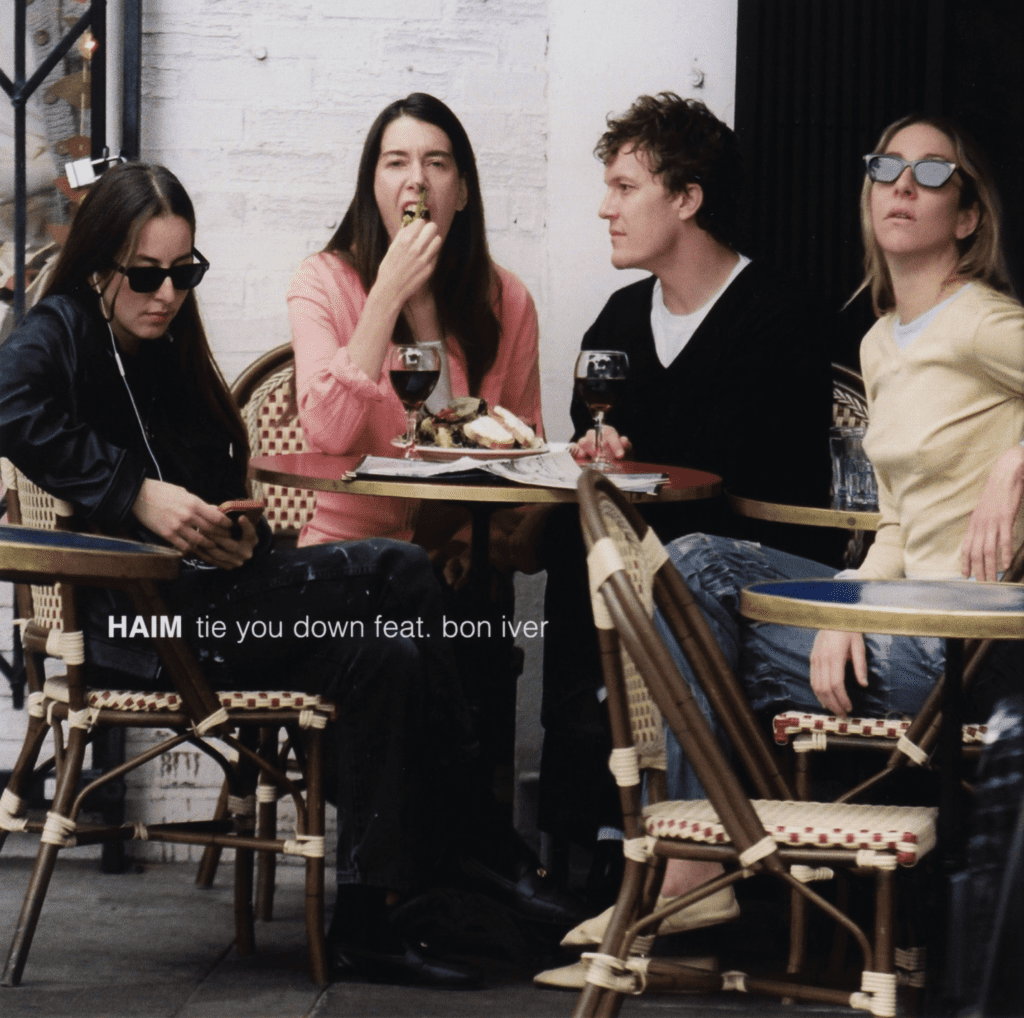The Great Blue Hole is the world’s largest sinkhole located off of the coast of Belize. It was made famous in 1971 by undersea explorer Jacques Cousteau when he first visited it to chart its depths. Cousteau declared it one of the top five scuba diving spots in the world and came to the conclusion that the phenomenon was created thousands of years ago when rising ocean levels led to the series of caves to become flooded. Recently, a team of scientists, including billionaire Richard Branson made an expedition to the bottom. Check out their findings and other fascinating facts about the Great Blue Hole.
3D Imaging
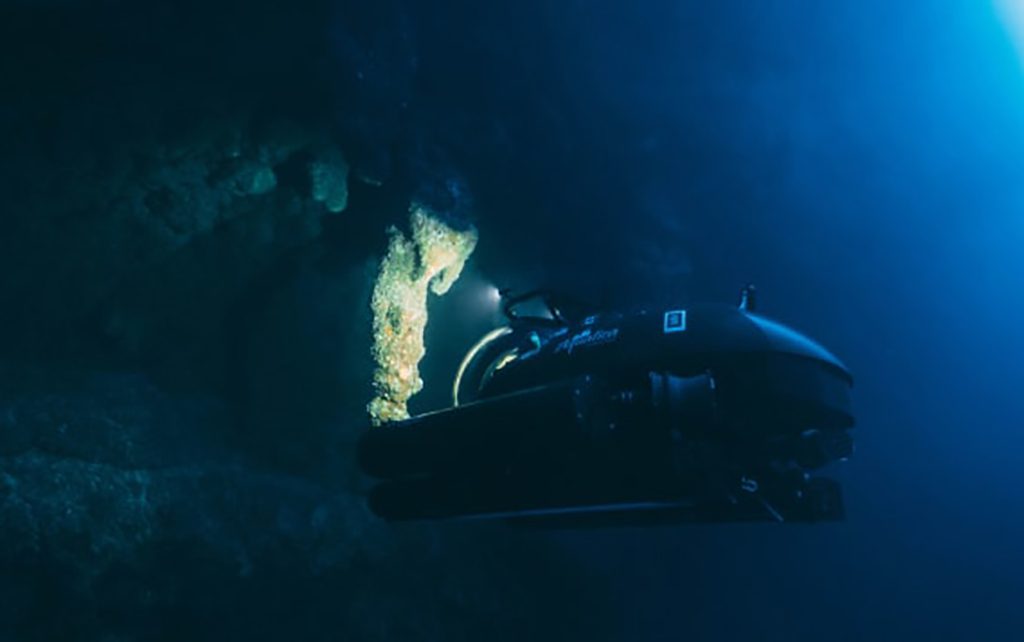
In December 2018, a team was assembled to embark on a journey to the bottom of the Blue Hole to see if they could make any further discoveries. Among the team was billionaire Richard Branson and Fabien Cousteau, the grandson of Jacques Cousteau, the man who put the hole on the map in the early 1970s.
Using two submarines, they were able to collect footage of their descent and even created the first-ever 3D map of the cavern’s interior. Chief Pilot Erika Bergman explained “We did our complete 360 sonar map and that map is now almost complete. It looks really cool, it’s this mesh-layered, sonar scan of the entire thousand-foot diameter hole.”
ADVERTISEMENT
Richard Branson Is Fascinated By It
ADVERTISEMENT
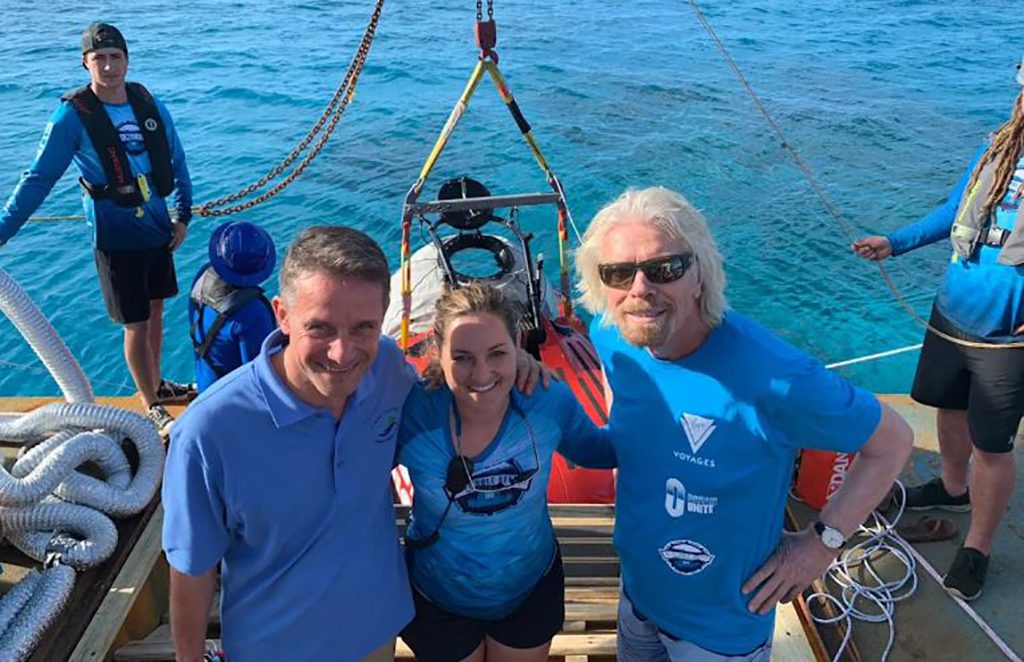
ADVERTISEMENT
Billionaire Richard Branson took a particular interest in the hole and decided that he wanted to be a part of the expedition to the bottom. Branson is no stranger to exploring or helping to protect the ocean as he runs Ocean Unite, a leadership initiative to help protect the ocean and raise awareness of the impacts of climate change.
ADVERTISEMENT
He believed that joining the expedition into the Blue Hole would help grab people’s attention and see the importance of what they were doing.
ADVERTISEMENT
Incredible Stalactites
ADVERTISEMENT
ADVERTISEMENT
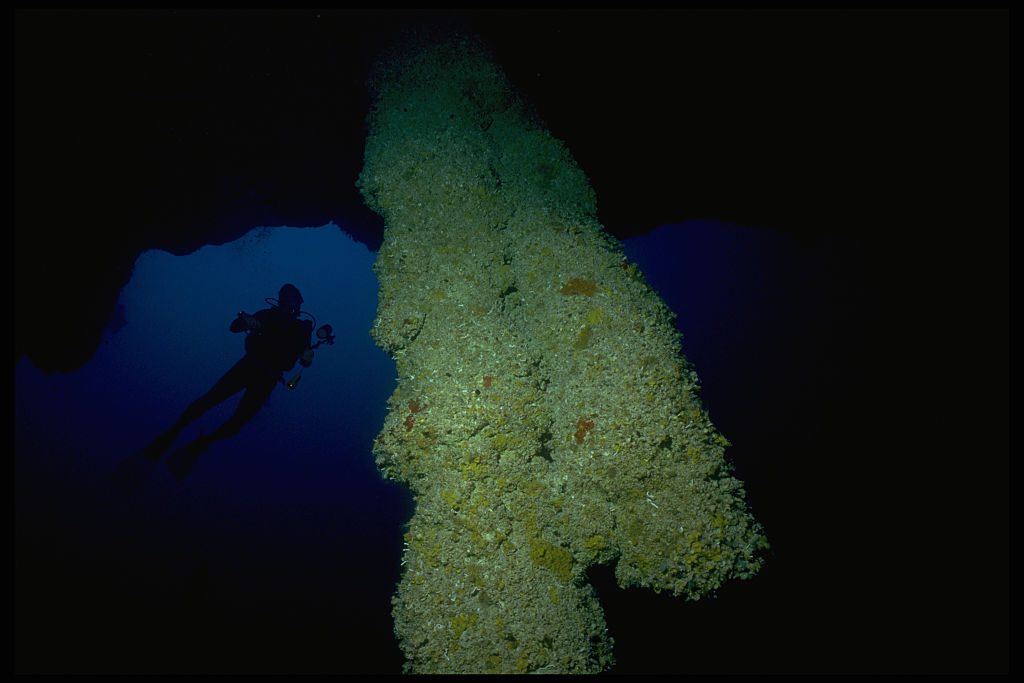
ADVERTISEMENT
According to Bergman, one of the most exciting aspects of the entire expedition was discovering never-before-seen stalactites, mineral deposits that form in the shape of icicles. She claims that these could only be found around 407 feet deep, almost near the bottom, and that they had never been discovered or mapped before.
ADVERTISEMENT
She went on to describe that there is a hydrogen sulfide layer that cuts off all light around 300 feet down which plunges the divers into complete darkness. There’s also no oxygen down there and therefore no life.
ADVERTISEMENT
Technology Allowed Them To See The Impossible
ADVERTISEMENT
ADVERTISEMENT
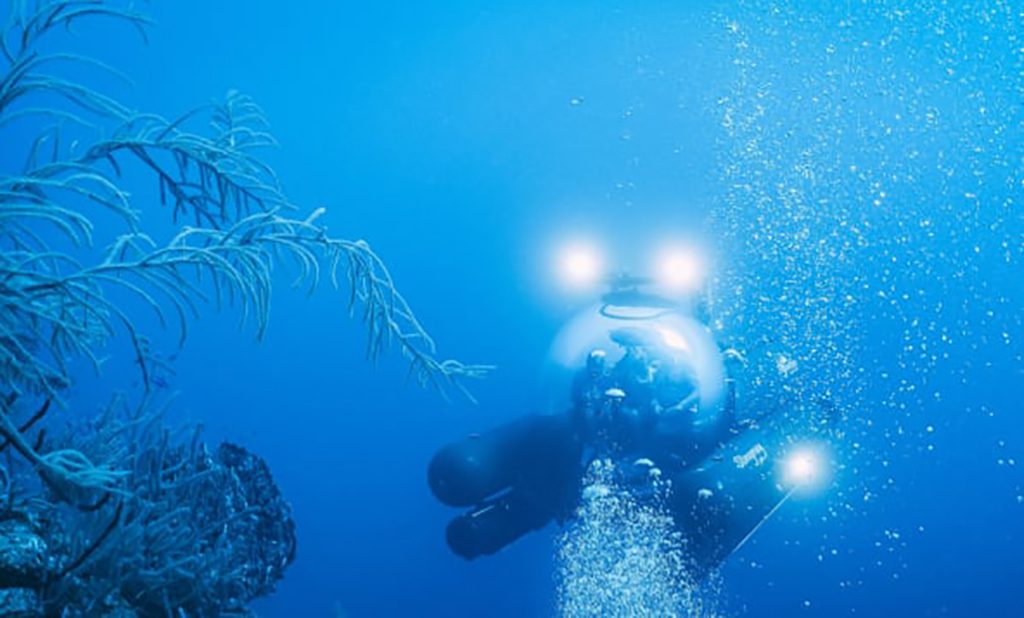
ADVERTISEMENT
Thanks to their high-powered and expensive high-resolution sonar, the team was able to see the details of the hole that would have otherwise gone unnoticed. Bergman claimed that “You can be 20 or 30 meters away from a stalactite or a hunk of the wall and see it in every perfect detail, better than eyesight could even provide.”
ADVERTISEMENT
However, what’s particularly interesting is that not everything that they found could be identified. There are unidentifiable tracks at the bottom of the cave which they say are “open for interpretation.”
ADVERTISEMENT
It Was Mostly Free Of Trash
ADVERTISEMENT
ADVERTISEMENT

ADVERTISEMENT
Considering that much of the ocean has been polluted over the years, the team was relieved to learn that the hole was relatively free of trash. This is partly due to the help of the Belize Audubon Society, which aids in protecting the hole.
ADVERTISEMENT
Apparently, there were only two or three small pieces of plastic that they found, and the hole remained largely untouched by humans. Bergman stated that “It’s neat that there are spaces on our planet — and most of them in the oceans — that are exactly the way they were thousands of years ago and will remain exactly the way they are thousands of years in the future.”
ADVERTISEMENT
It Was Broadcasted Live
ADVERTISEMENT
ADVERTISEMENT
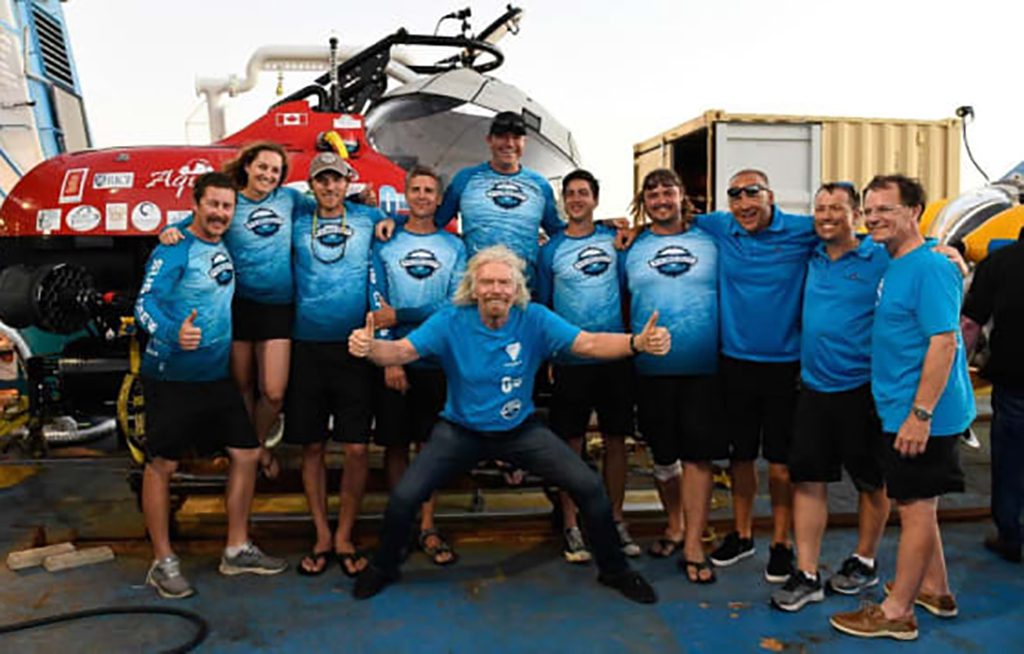
ADVERTISEMENT
The expedition took place on December 2, 2018, and was broadcast live on the Discovery Channel. Originally, they just wanted to broadcast when they reached the bottom of the hole, but that proved to be difficult so they had to change their strategy.
ADVERTISEMENT
According to Bergman, “We dove the morning before the livestream, and then livestreamed from the ship being very open and clear about the footage having been filmed a few hours before.” She hoped to intrigue people as much as they were when they’re shown footage of astronauts in space.
ADVERTISEMENT
They Didn’t Even Touch Down On The Bottom
ADVERTISEMENT
ADVERTISEMENT
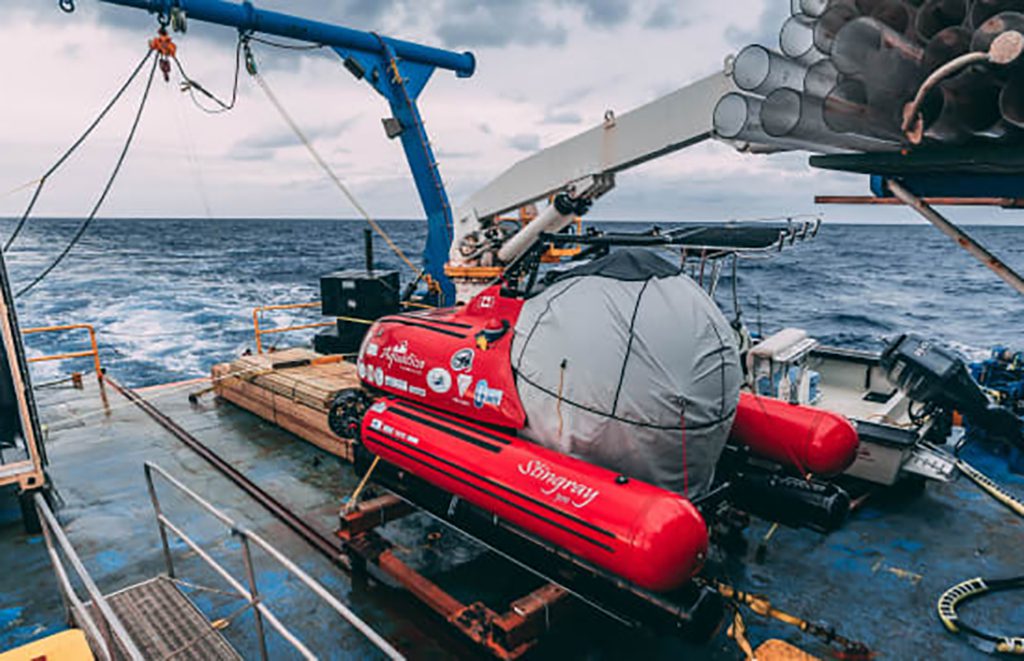
ADVERTISEMENT
Although the team made it all of the way down to the bottom of the hole, they made sure not to let their submarine touch the ground.
ADVERTISEMENT
Bergman explained that “We’re not even going to set down on the bottom because it’s theoretically been filling with silt for the last 100,000 years. We can get really, really nice and close up to the objects without touching them or stressing them in any way. We’ve had a lot of experience doing that around shipwrecks, mostly, where you definitely don’t want to touch anything.”
ADVERTISEMENT
The Mission Took Two Weeks
ADVERTISEMENT
ADVERTISEMENT
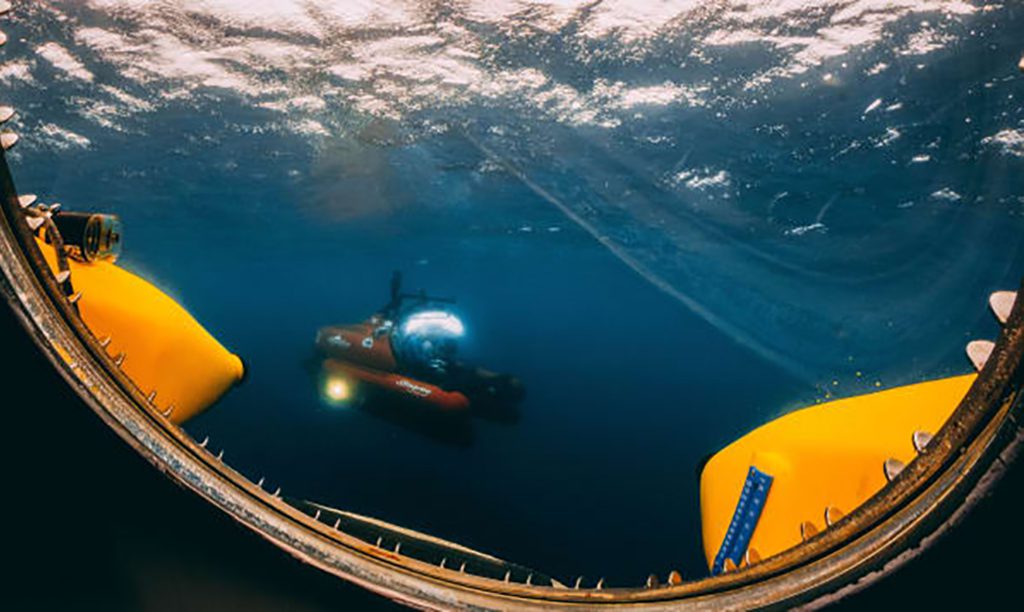
ADVERTISEMENT
The goal to make the 360-degree sonar map only took an impressive two weeks in order to gather all of the data. After their first dive on December 2, the team used the two submarines to monitor the area. While there were a lot of moving parts, they managed to leave no trace of their expedition.
ADVERTISEMENT
All they did was take pictures and leave a few footprints in the surrounding area. Now, the team has plans for an expedition of the British Virgin Isles, although they don’t have any intention of broadcasting this one.
ADVERTISEMENT
The Hole Is Massive
ADVERTISEMENT
ADVERTISEMENT
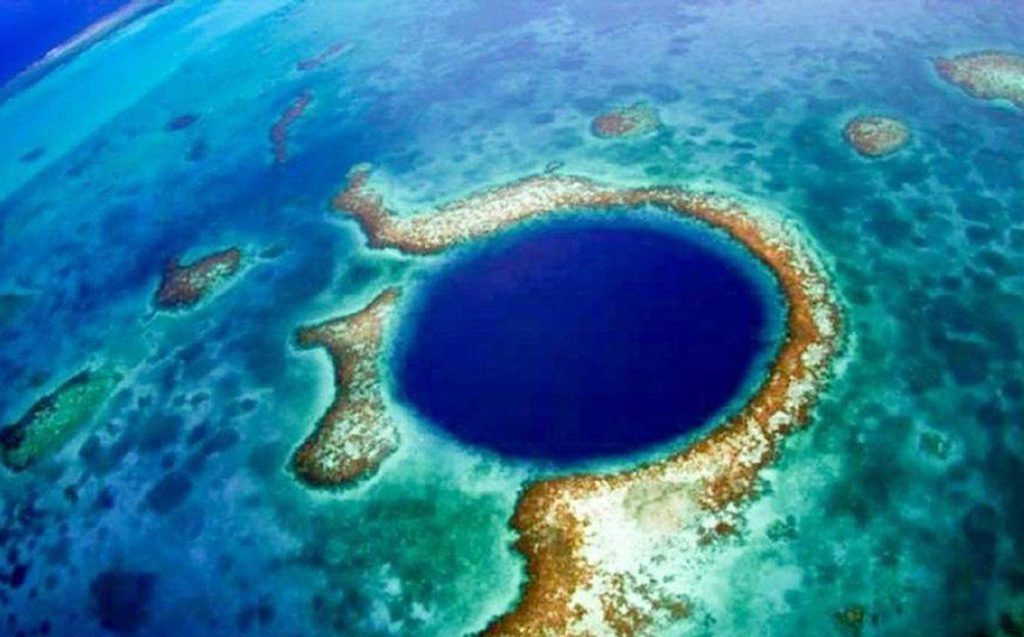
ADVERTISEMENT
The Great Blue Hole is the largest natural formation of its kind. Being oddly circular in shape, it is 1,043 feet across and an amazing 407 feet deep. Early investigations by Jacques Cousteau showed that the hole’s origin was formed of typical karst limestone before the sea rose in four different stages, eventually filling the hole.
ADVERTISEMENT
The stalactites found at the bottom have revealed that the formation of the caverns took place between 153,000; 66,000; 60,000; and 15,000 years ago.
ADVERTISEMENT
It’s Part Of The Belize Barrier Reef System
ADVERTISEMENT
ADVERTISEMENT
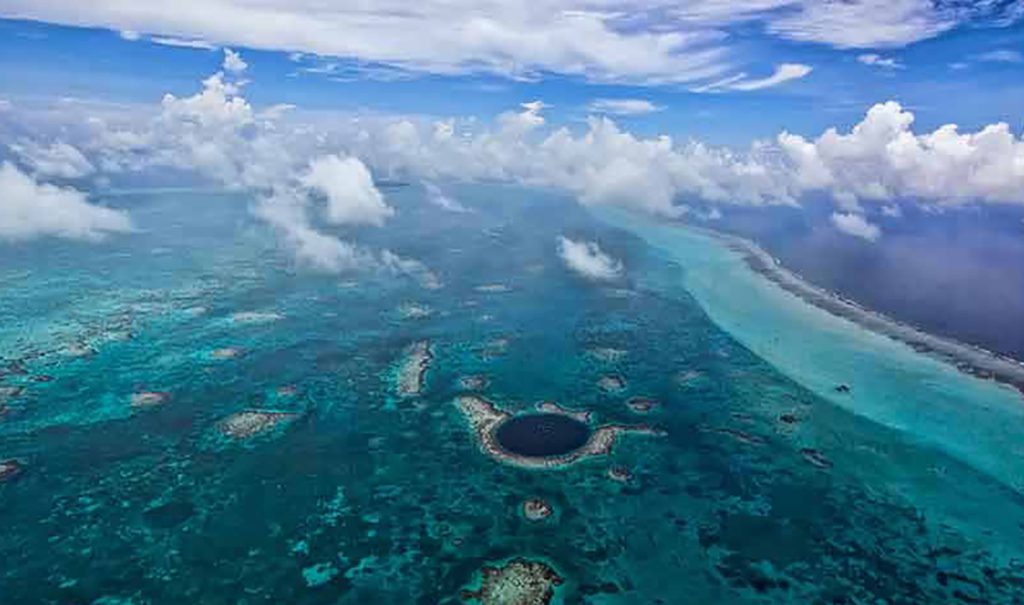
ADVERTISEMENT
The Great Blue Hole is part of the massive Belize Barrier Reef Reserve System which is now a World Heritage Site. The Belize Barrier Reef is a series of reefs along the coast of Belize; a 190-mile long section of the 560-mile long Mesoamerican Barrier Reef.
ADVERTISEMENT
It is the largest barrier reef in the Western Hemisphere and the second-largest in the world behind Australia’s Great Barrier Reef. The Great Blue Hole is near the center of Lighthouse Reef located 43 miles from the mainland.
ADVERTISEMENT
Water Circulation Is Minimal
ADVERTISEMENT
ADVERTISEMENT
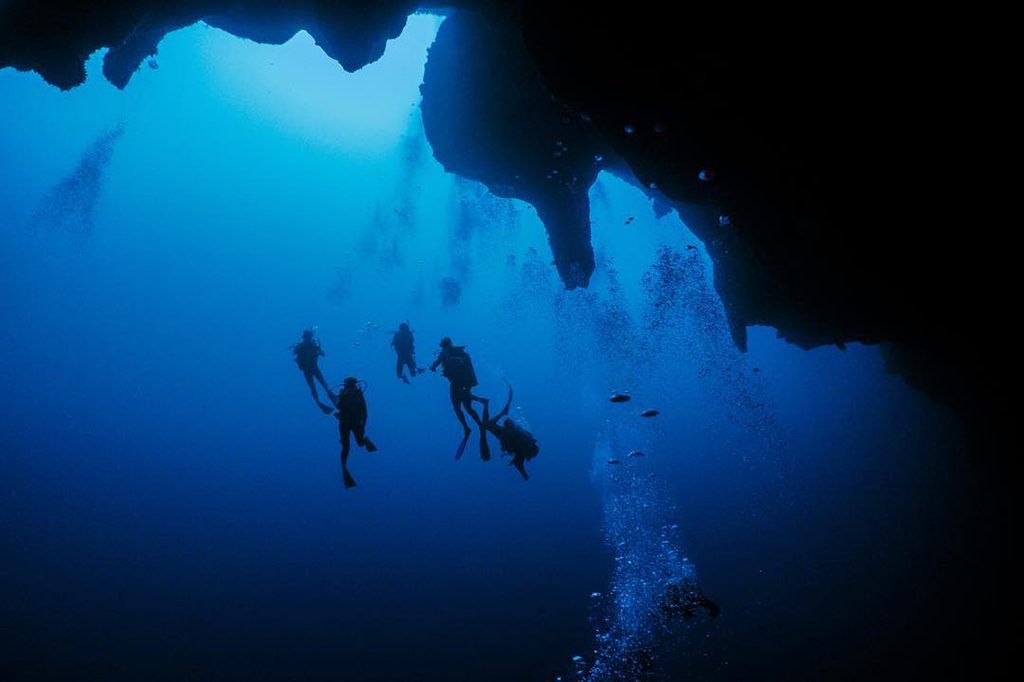
ADVERTISEMENT
Because the hole is so large and so deep, very little of the water is ever circulated in and out of the hole. At a certain depth, the water eventually becomes anoxic meaning that the area is completely void of oxygen, making it a desolate part of the hole with minimal life.
ADVERTISEMENT
For recreational divers, this makes it not a very colorful dive, as few things can survive the lack of oxygen in those depths.
ADVERTISEMENT
The Hole’s Name
ADVERTISEMENT
ADVERTISEMENT
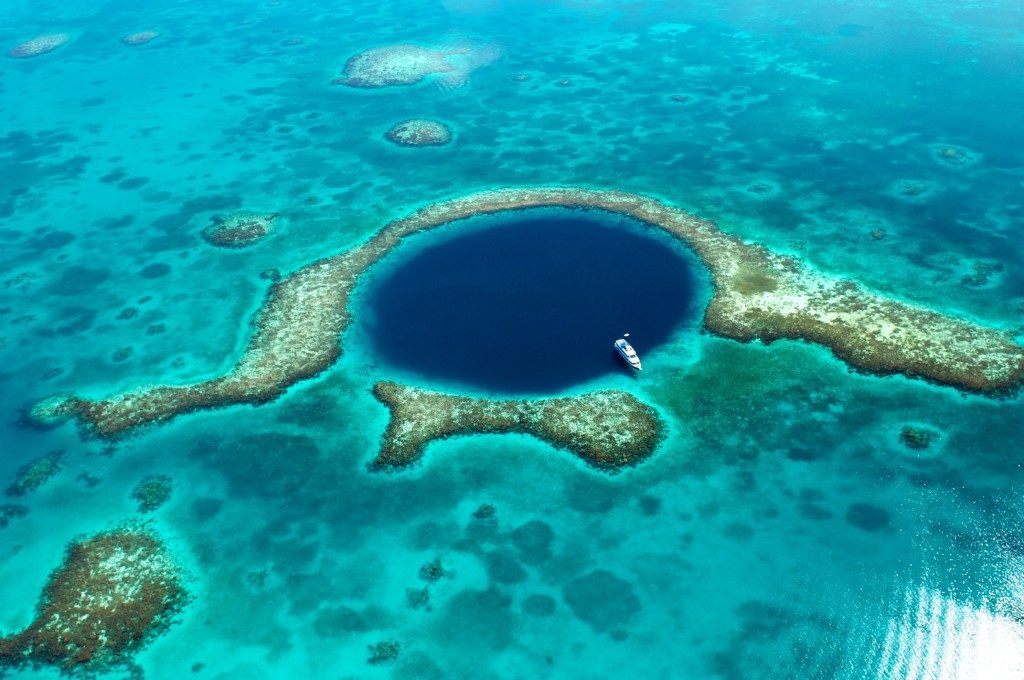
ADVERTISEMENT
The name Great Blue Hole came about thanks to a British diver named Ned Middleton who wrote about his diving career in his book titled Ten Years Underwater in 1988. He simply called the phenomenon the Great Blue Hole and the name stuck as it’s more than appropriate and easy to remember.
ADVERTISEMENT
Although the Blue Hole was charted by the Spanish long ago, it’s still unclear what they named the location when they discovered it.
ADVERTISEMENT
Warnings For Scuba Divers
ADVERTISEMENT
ADVERTISEMENT
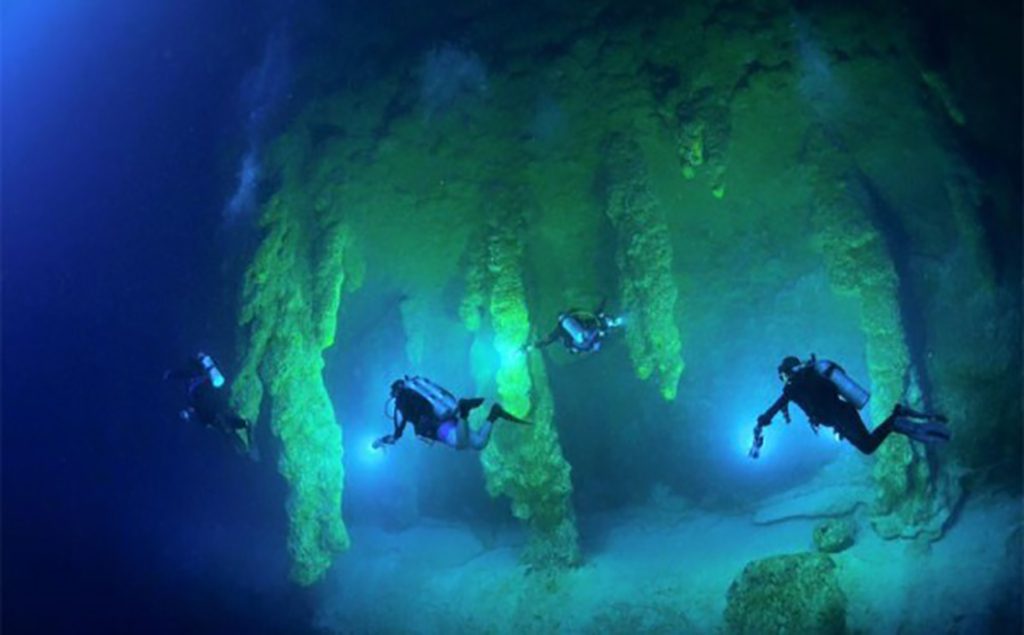
ADVERTISEMENT
Obviously, the Great Blue Hole has developed to become one of the most revered and greatest scuba diving spots in the world. It gives scuba divers the opportunity to dive in near crystal-clear water and see the diversity of species both outside and in the hole itself.
ADVERTISEMENT
Some popular fish species to see include Midnight Parrotfish, Caribbean reef shark, and sometimes even Hammerhead sharks. While the hole is incredibly famous, it isn’t open to divers of all skill levels. A diver must have more than 24 dives under their belt if they want to attempt it.
ADVERTISEMENT
There Are Surrounding Cenotes
ADVERTISEMENT
ADVERTISEMENT
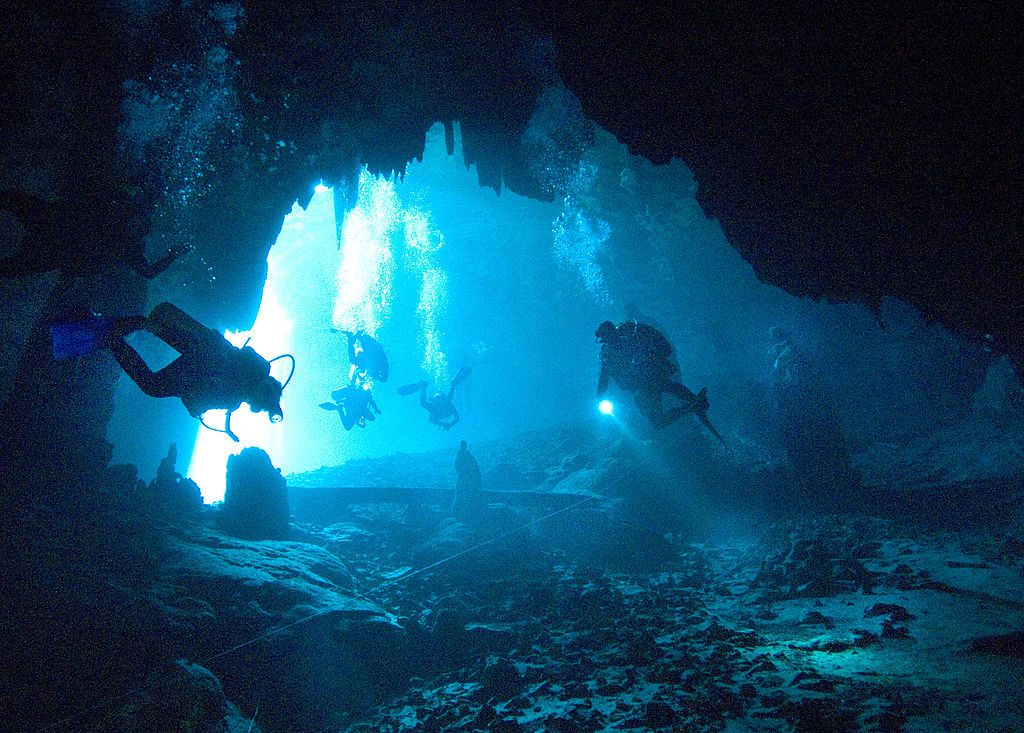
ADVERTISEMENT
The Great Blue Hole isn’t the only phenomenon of its kind in the area either. There are mainland caves in the surrounding areas that have similar sinkhole formations along Belize and in Mexico’s Yucatan Penninsula. These are known as cenotes.
ADVERTISEMENT
However, these cenotes are different from most, as most of them usually connect to underwater cave systems. However, there is no evidence that any of the cenotes connect to the Great Blue Hole although people are still searching.
ADVERTISEMENT
Putting Its Size Into Perspective
ADVERTISEMENT
ADVERTISEMENT

ADVERTISEMENT
With the hole being over 1,000 feet wide and over 400 feet deep, you could theoretically fit a lot of large objects into that hole. To put things into perspective, a professional NFL field is 360 feet long including both end zones, so the hole is about as big as three football fields put together.
ADVERTISEMENT
In addition, you would easily be able to fit two Boeing 748 aircrafts into the hole with more than enough room to spare. You might even be able to fit three.
ADVERTISEMENT
It Used To Be A Cave
ADVERTISEMENT
ADVERTISEMENT

ADVERTISEMENT
The Great Blue Hole wasn’t always a massive hole over 40 miles off of the coast of Belize, at one point it was like one of the many sinkholes and cenotes that are peppered throughout the Yucatan Peninsula and Belize.
ADVERTISEMENT
However, the hole formed after the large limestone cave collapsed which is assumed to have happened sometime after the last glacial period. It was after the ice age that the sea levels began to rise exponentially once again, filling the hole with water and turning it into what we see today.
ADVERTISEMENT
Jacques Cousteau Didn’t Discover The Hole
ADVERTISEMENT
ADVERTISEMENT
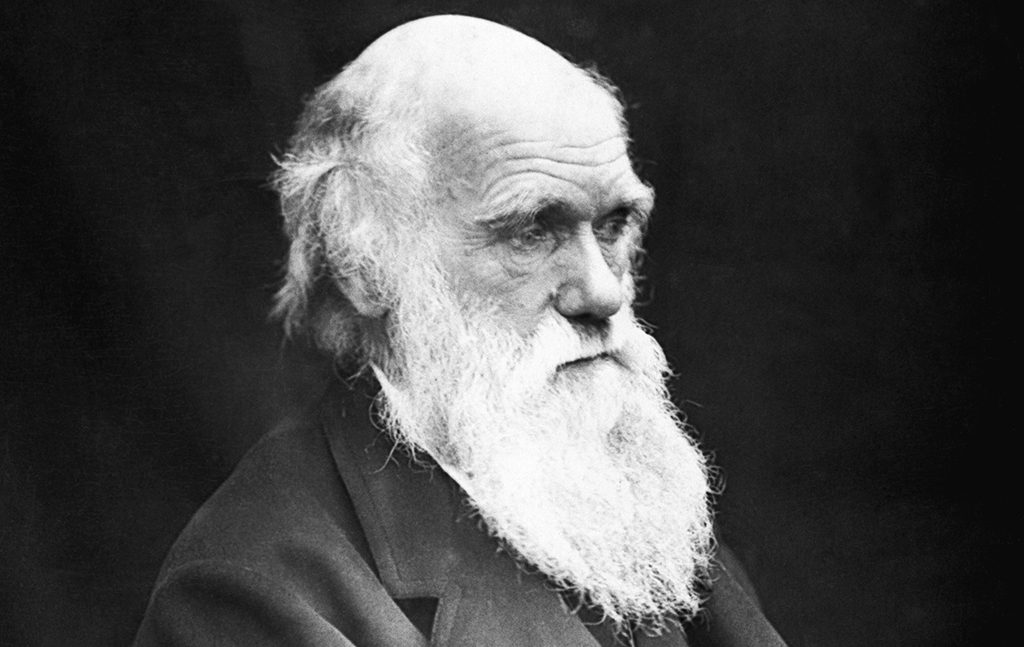
ADVERTISEMENT
Although explorer and marine biologist Jacques Cousteau made the Great Blue Hole famous in 1971, he wasn’t the first person to actually discover the hole. The sinkhole had been known by local fisherman for decades, with many believing that ancient Maya lived close to the hole thousands of years beforehand.
ADVERTISEMENT
Even before Cousteau naturalist Charles Darwin wrote about the reef, claiming that it is “the most remarkable reef in the West Indies.”
ADVERTISEMENT
There Is A More Accessible Blue Hole
ADVERTISEMENT
ADVERTISEMENT
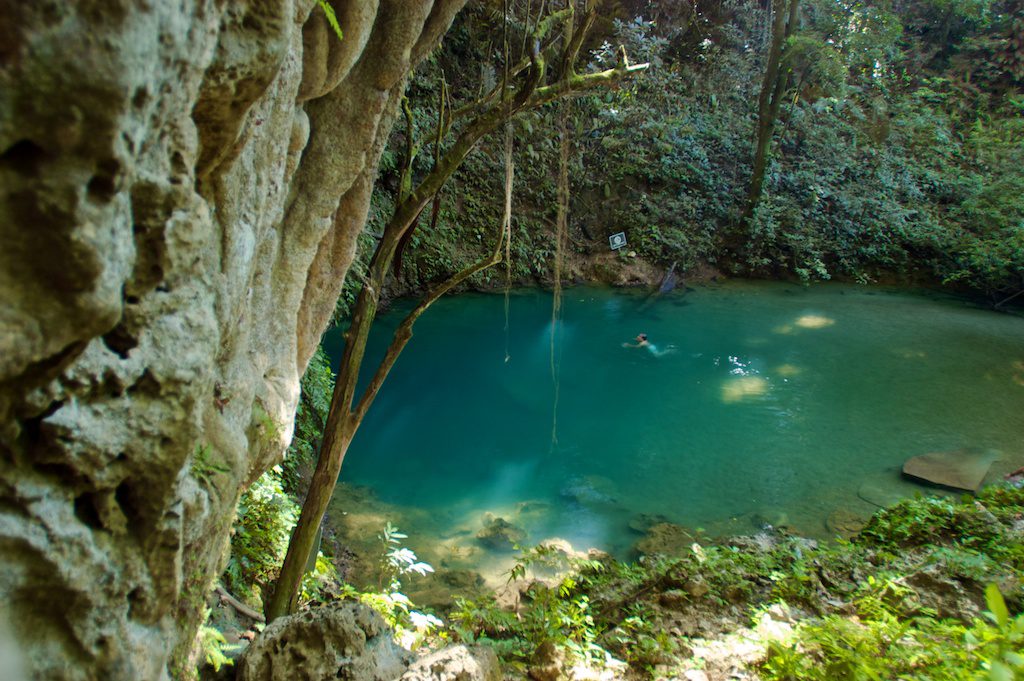
ADVERTISEMENT
Although there are other cenotes that have been discovered along the coast of Brazil, there is yet another Blue Hole, which has become almost as popular as the Blue Hole over 40 miles off shore. Around 2 two miles from St. Herman’s Cave is a still-intact cave system near Belmopan, Belize named the Blue Hole National Park.
ADVERTISEMENT
There lies a beautiful pool that is surrounded by a tropical forest. This has become an extremely popular spot for tourists who visit to swim in its sapphire waters and say that they have been swimming in a Blue Hole once.
ADVERTISEMENT
Sharks Like The Hole
ADVERTISEMENT
ADVERTISEMENT
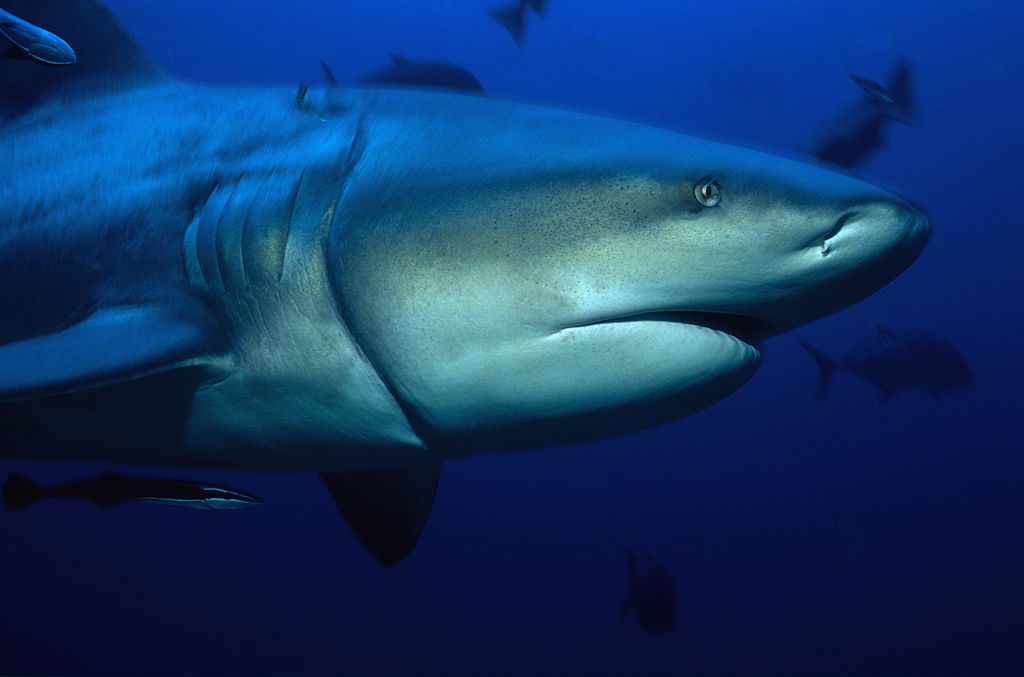
ADVERTISEMENT
While there are a variety of different species of sea life towards the top of the hole, it’s been discovered that sharks have taken a particular liking to it. Some of the common species that call the hole home include bull sharks, Caribbean reef sharks, and the ever-elusive hammerhead sharks.
ADVERTISEMENT
So, it’s always a good idea to keep your eyes peeled if you’re an experienced diver exploring the hole. However, creatures such as these only live so deep because of the hydrogen sulfide layer which prevents any life from moving any further down.
ADVERTISEMENT
It Can Be Seen From Outer Space
ADVERTISEMENT
ADVERTISEMENT
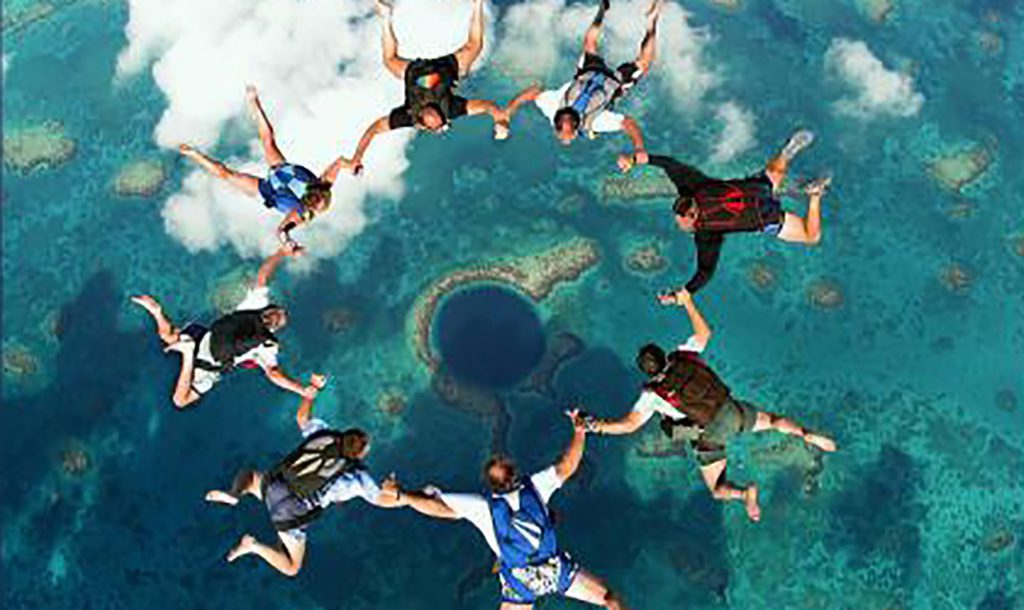
ADVERTISEMENT
Amazingly, the Great Blue Hole can be seen from outer space. Yet, considering how large it is, it may not come as that big of a surprise. In 2017, astronauts aboard the International Space Station took numerous (now iconic) images of the hole as they passed it overhead.
ADVERTISEMENT
Apparently, the hole is almost impossible to miss as the dark circle provides an obvious contrast from the lighter surrounding waters as well as the circular bounds of the Lighthouse Reef.


